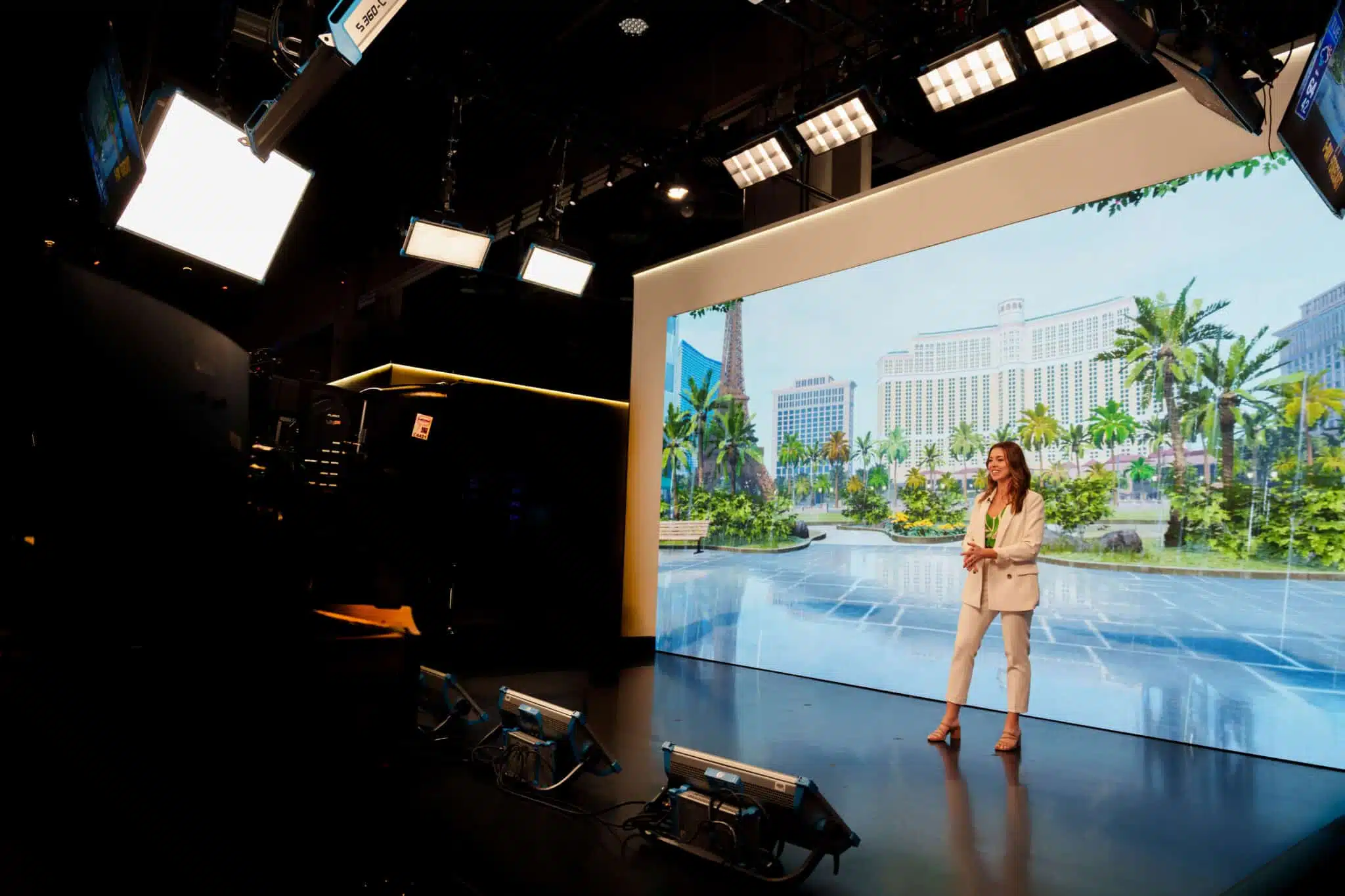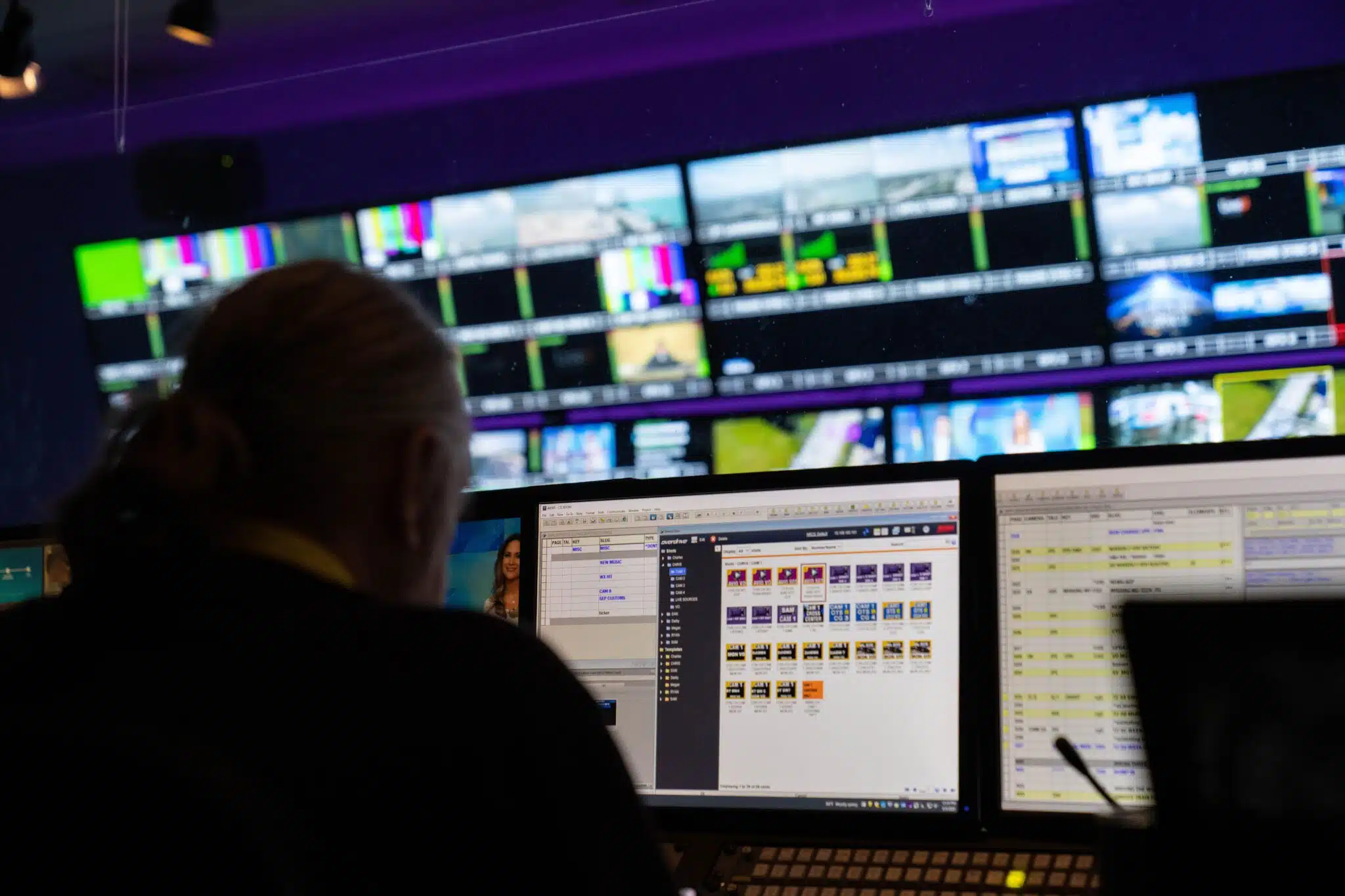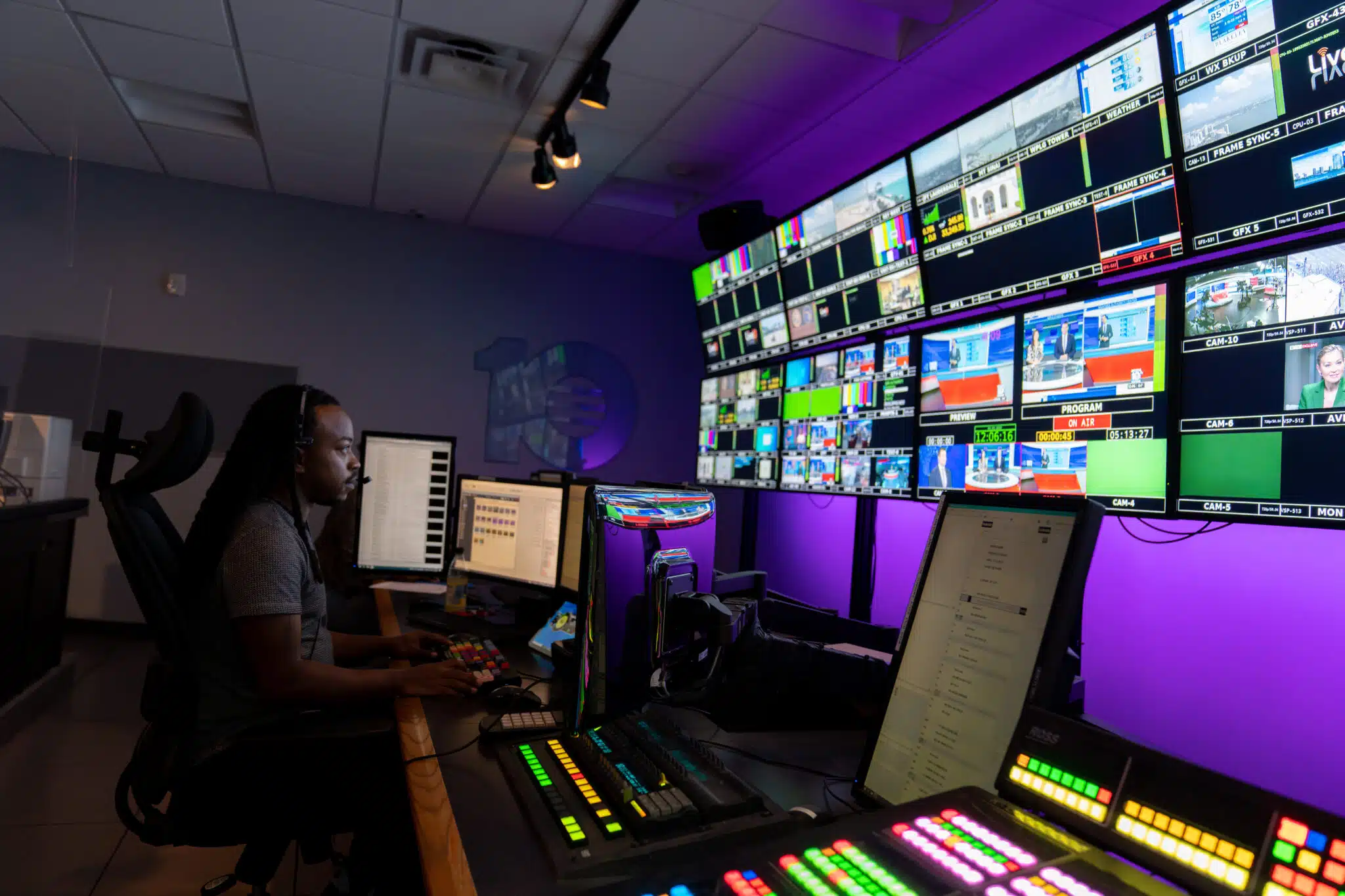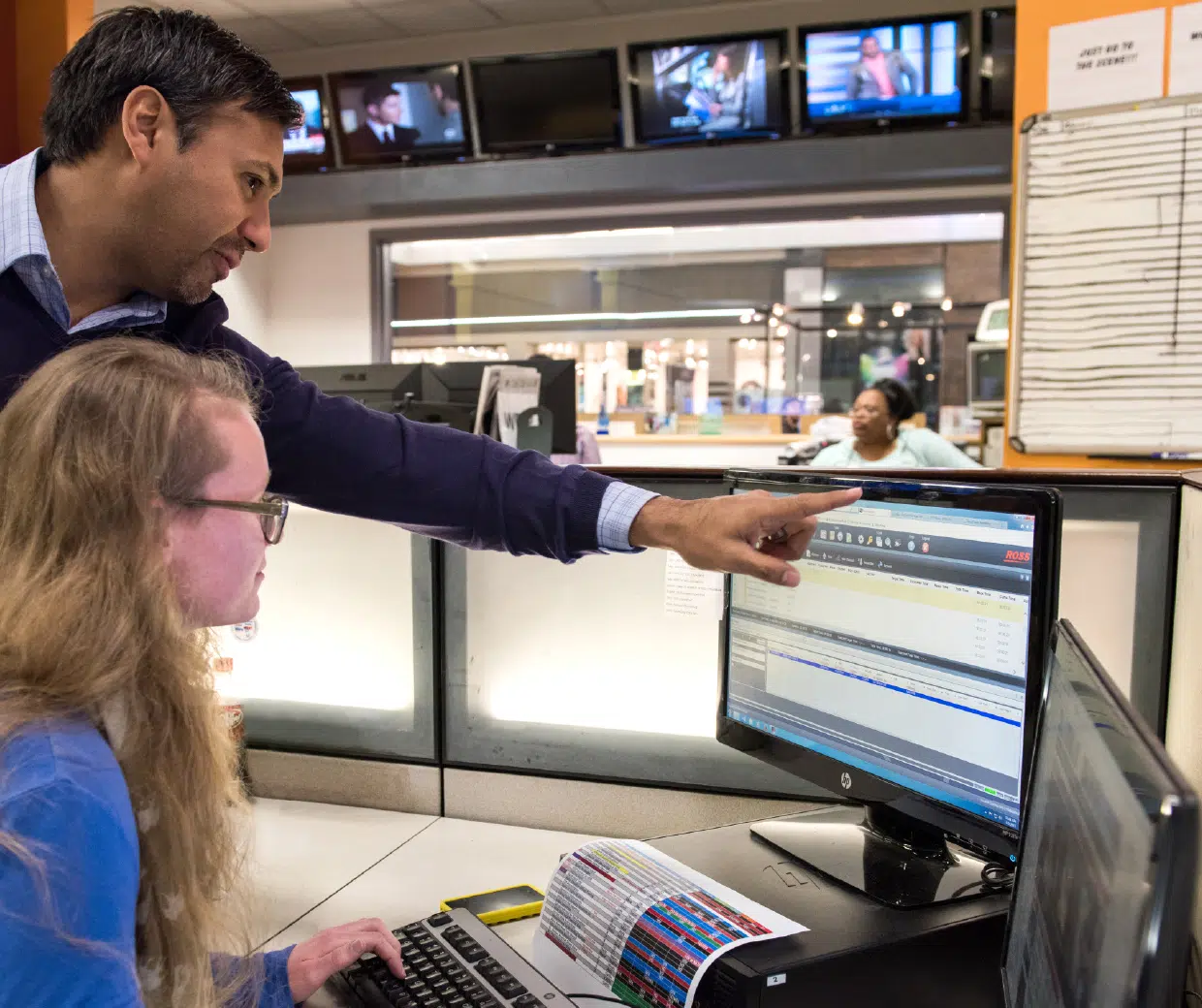April 22, 2024 - Ross Video Team, Insights & Resources
Virtual Studio: A Strategic Advantage for Modern News Broadcasters


Contrary to what many believe, virtual studio solutions are not new technology. They have just been neglected.
CBS tried them at the dizzy heights of the dot-com bubble back in 1999, as did many others. But the combination of expense, complexity, and subpar graphics meant they crashed and burned very quickly.
As one, the industry quietly turned away and pretended it had never happened.
But in recent years, we have quietly been helping traditional news broadcasters around the world, from the BBC to NBC experiment with new forms of video production and keep up in the creative arms race that modern media has become.
Many have found that virtual studio technology offers a significant strategic advantage for modern newsrooms — and can be for yours too.
Media consumption habits have shifted in the last decade, making the industry more competitive than ever before.
Audiences bombarded by the volume and variety of news outlets and media forms available, news broadcasters are rapidly expanding and experimenting with creative elements to keep viewers engaged.
“Millennials and Gen Z care more about context, not just bullet headlines, so we give them in-depth storytelling and we use our virtual set to help do that.”
— Tim Carista, APC Director, NBC Universal Media
A lower technological barrier to entry and shift of advertising capital towards new advertising platforms (such as social media) has resulted in lower news viewership and budgets — and smaller creative and technical teams for many broadcasters.
Newsroom directors and their teams must do more with less to produce engaging, accurate content to capture audiences — and are increasingly turning to virtual studio to do that.
While the traditional news industry has been reluctant to implement (or even talk about) virtual studio, they have become commonplace in sports broadcasting.
Their adaptability and ease of redesign make virtual studio a powerful tool for news broadcasters — especially those operating under constrained budgets. That flexibility allows newsroom directors to do more with graphics and creative elements, inject more dynamism and visual intrigue into their broadcasts, and turn the studio into a storytelling tool. It also facilitates much faster set up and tear down times, rapid transitions between segments and shows with a fraction of the budget, time, and resources required by physical sets.
The advantages of a virtual broadcast studio are threefold: easy set-up, more creative, and reduced broadcasting resources.
For instance, NBC LX built a virtual set into their new studios, allowing them a lot of flexibility and allowing them to use immersive graphics to grab attention and draw people into the story.
See how NBC LX uses their virtual set to tell better stories in this video:
Virtual studios can also make live video production more efficient. They allow for faster transitions between sets and environments, meaning producers can quickly repurpose studio spaces for different programs without having to spend the time and resources building multiple hard studios and sets.
“Everybody is looking at costs, and we know the material costs of building sets. A virtual studio is a great combination of lowering those costs and increasing the creative potential exponentially.”
— Jim Rothschild, Station Manager, WRAL 5
Virtual sets and studio elements are programmed using automated workflows, templates and pre-recorded transitions, meaning they can be used and repurposed for multiple different stories with minor editing. These highly automated workflows are particularly useful for smaller production teams, empowering reporters and creatives to deliver more high-quality content with a fraction of the work involved.
Success in the modern newsroom means doing more with less: more content with less budget, more engagement with less staff, and more “bells and whistles” in less time.
Modern news broadcasters use Ross Video products like XPression, Voyager, and Lucid to automate and streamline immersive virtual studios. Workflow automation tools, like Overdrive and Streamline Pro, stitch these tools together, accelerating the production process and ensuring brand consistency and quality.
That frees reporters and creatives to deliver more content, creating and embellishing their own stories — sometimes live on air — without adding to their news directors’ long list of worries.
To learn more about how Ross Video can help your newsrooms stay competitive in the rapidly changing media landscape, reach out to one of our newsroom production experts here.
While the most significant election year in history is behind us, it’s never too early to start preparing for the next cycle. Download our comprehensive guide to election newscast graphics and technology to discover how to engage your audience during election season while delivering accurate, real-time data.


Traditional news media is under increasing scrutiny, critique, and often attack from administrations on both sides of the aisle and an ever-more distrusting and distracted populace. Even …

Some of the biggest news stories of all time — the Chilean Miner Rescue, the O.J. Simpson Trial, and the Miracle on the Hudson — started with …

We have helped some of the industry’s top news broadcasters — like the BBC, Sky News, and CBS — make their newsrooms more efficient — and we’ll go …
While the most significant election year in history is behind us, it’s never too early to start preparing for the next cycle. Download our comprehensive guide to election newscast graphics and technology to discover how to engage your audience during election season while delivering accurate, real-time data.